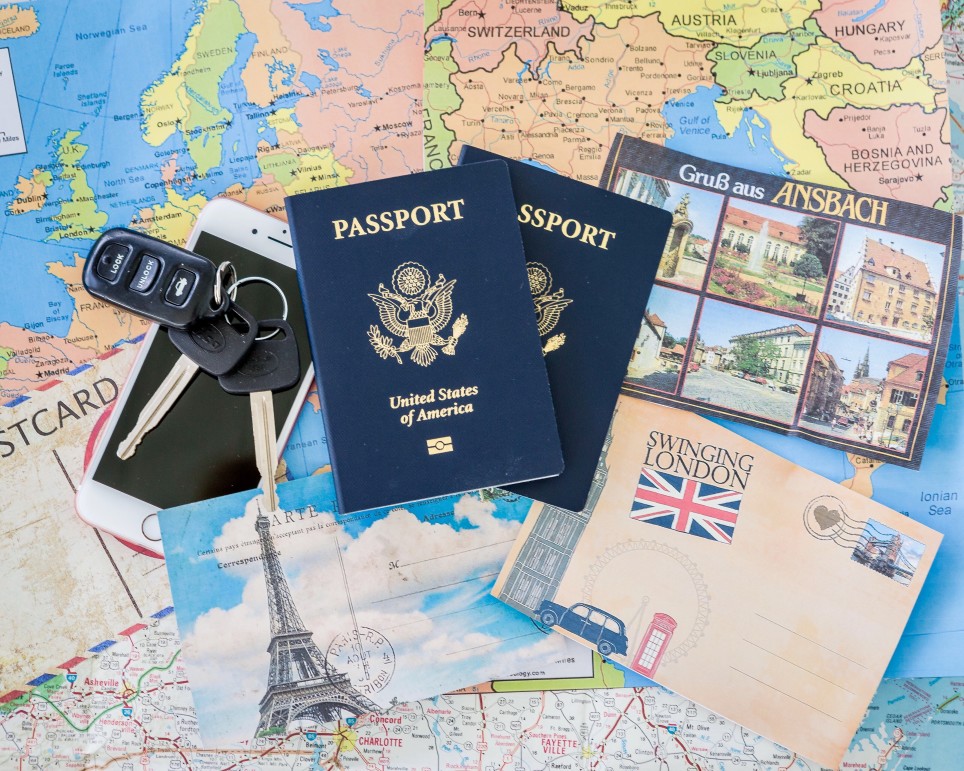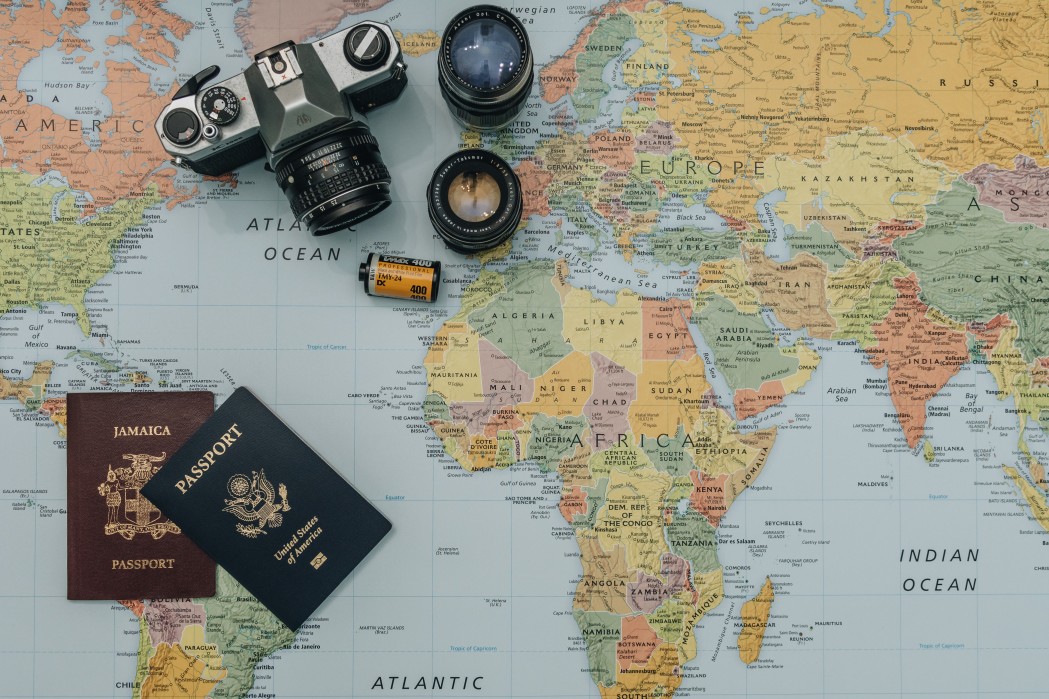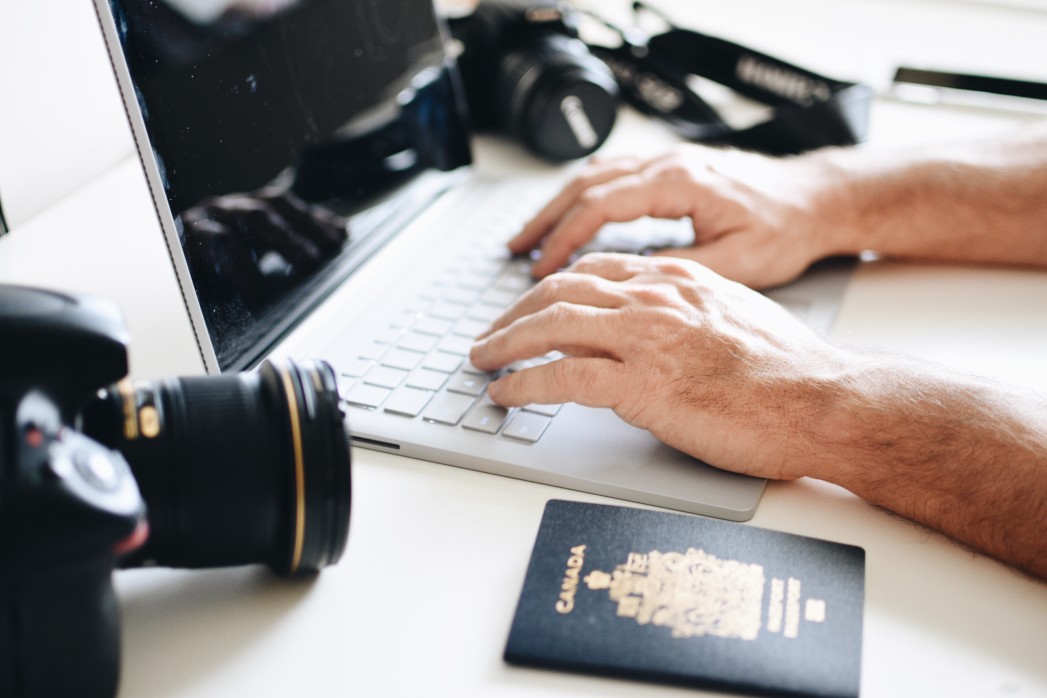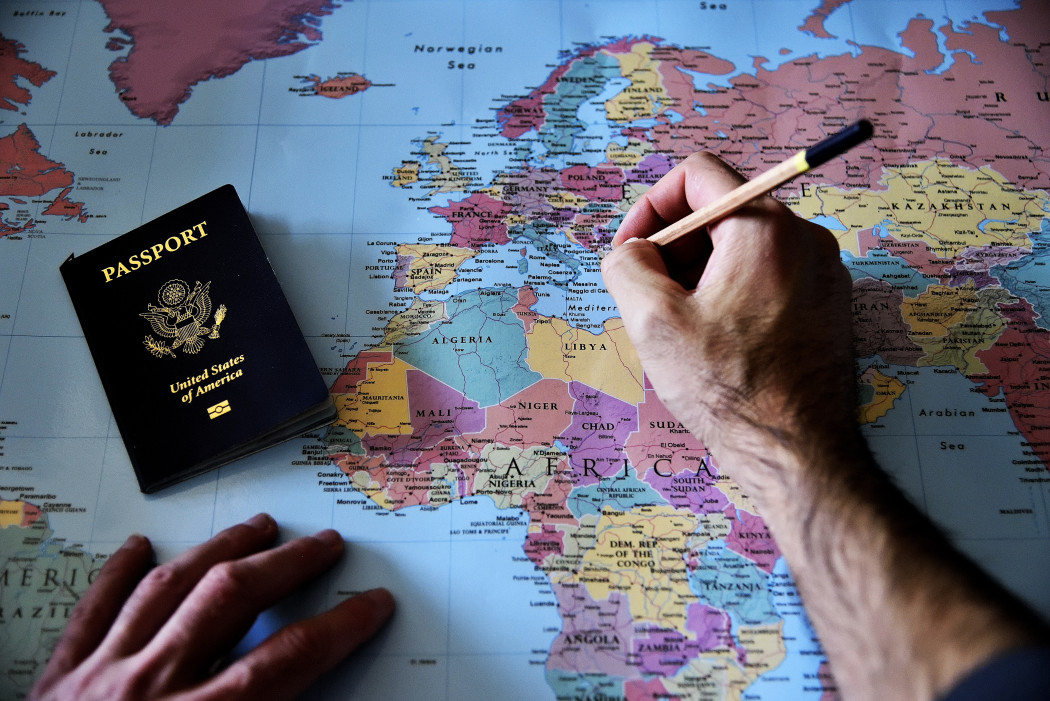A US passport (quite literally) opens up a world of travel opportunities not available without one.
At the same time, not everyone knows how to get their hands on this “key to the world”.
Luckily, though, you’ll be able to use this guide to help you do exactly that.
By the time you finish the inside info below you’ll know exactly what you need to do to get your first time passport, how to renew your passport moving forward, how to double confirm that you are eligible for a US passport, and how to actually navigate the passport application process.
On the surface, applying for a passport can look pretty daunting.
You are, after all, dealing with the US government here – and you’re going to have to produce some documentation, some photographs, and some information to get your passport that you might not have immediate access to (just yet).
Again, though, we will walk you through this process from start to finish until you feel totally confident getting your passport.
Shall we jump right in?

First Time or Renewal for Your Passport?
Straight out of the gate, you need to figure out whether or not you are applying for your passport for the very first time or if you are looking for a renewal.
First time passport applicants should expect to have to spend a couple of hours getting everything ready and moving through the actual application process.
Renewal passport applications, though, can usually be successfully completed in just a few minutes – so long as your passport has not yet expired and your recorded information is still accurate.
If you are applying for your passport for the first time, you want to make sure that you meet all of the passport eligibility requirements necessary to successfully complete this process.
We highlight those in depth in just a moment, but this is definitely a list of things you’ll want to run through before you get started.
Secondly, you’re going to want to make sure that you have everything you need to go through the passport process from start to finish efficiently, too.
You’ll want a copy of the application, all necessary personal documentation, passport photographs (we go over that in depth in a moment) and money to cover your passport application fees.
It’s also a good idea to go through this passport application process as early as possible, as the whole thing can take anywhere between 10 and 12 weeks (standard).
You can also expedite your first passport as well as your passport renewal, getting it inside out 3 to 4 weeks – or even faster if you need to travel internationally on an emergency basis.

Overview of Passport Eligibility Requirements
Let’s break down the eligibility requirements for a US passport, shall we?
To successfully apply for and receive a US passport you must be a US citizen by birth, though you can also be a US citizen by naturalization or considered a US “national” as well.
Anyone that does not fall into one of these three categories is not going to be eligible for a US passport.
There are two groups of people that are technically noncitizen nationals that may also apply for a US passport, and that’s people that were born in American Samoa as well as those that were born in the Commonwealth of the Northern Mariana Islands.
Those that were born in the Commonwealth of the Northern Mariana Islands must also have made the decision to be treated as a US national and not as a US citizen to be eligible for this specific US passport.
It’s an interesting little wrinkle and a unique distinction to be sure, so make sure that you speak to a passport expert in the Northern Mariana Islands if you find yourself in this situation.
Citizens of Puerto Rico, citizens born in Guam, and citizens born in the US Virgin Islands – as well as those that have parents that are US citizens (with some exceptions outlined by the Child Citizenship Act) – will also be eligible to receive a US passport.

The Passport Application Process Simplified
Now that we’ve gone over the basics of eligibility, it’s important to go over the application process from start to finish – step-by-step – so that you can navigate it on your own without headache and without hassle.
The very first thing you’ll want to do is actually get your hands on the US passport application process, officially known as US Government Form DS 11.
This form can be found online (which is where most people excessive these days), but you also be able to request a physical copy directly from the United States government.
You can also get a paper copy anywhere that passport photos are taken, and most US post office locations also have these kinds of forms on hand that you can fill out and submit all on your own.
Anyway.
The next thing you’ll need to do is to decide exactly what kind of passport you want to receive.
Some people are going to want the “standard” 28 page passport book that provides access to all available agreement countries around the world. This is your typical sized passport, but you are only going to be limited to 28 pages – and that might not be enough for frequent travelers.
Some table, on the other hand, are going to be looking to take advantage of the 52 page passport book. This one also provides access to all available travel agreement countries around the world, though it’s larger, thicker, and more cumbersome.
Folks that are going to be traveling all that much (internationally, anyway) probably won’t need this kind of passport.
Finally, the government recently unveiled a third passport option – the Passport Card!
This card is the same size as a driver’s license, is relatively inexpensive, and provides US citizens with the ability to travel to Canada, Mexico, Bermuda, as well as the Caribbean without having to splurge on a full-blown US passport.
On the one hand, this is a very useful tool if you’re not going to be traveling to all corners of the globe but only need to visit those locations we highlighted above. It’s also significantly less expensive and convenient enough to keep tucked away in your wallet or purse.
On the other hand, though, you are going to be significantly restricted in the amount of places you can visit with this passport. If you’re planning on any serious amount of travel abroad not to those for locales we highlighted earlier the odds are pretty good you’ll want to go in a different direction.
The next step in the application process is proving that you are a US citizen or that you are a non-US national, just like we highlighted earlier.
You’ll need to provide details that show you were born in this nation or that you are legally naturalized in the country. You can do this with documents that include:
- Birth certificates (certified birth certificates)
- A certification of a baptism or circumcision
- A hospital record of your birth in United States
- Insurance files proving that you are a US citizen
- Published birth announcements in newspapers and the like
You can also use a notarized affidavit of US Government Form DS 10 (the birth affidavit) in conjunction with any of the documentation we mentioned earlier.
Submitting proof of your identification is the next step, and that usually means providing a copy of your drivers license or other identification provided by the US government.
There’s an opportunity for those without this official information/documentation to further confirm their identity, though you’ll have to go through the list of proper secondary identity evidence and speak to someone when you submit your passport to move forward.
Photographs or photocopies out all of your information needs to be submitted with your application. As a general rule, it’s a good idea to photocopy your photograph absolutely EVERYTHING you are submitting – just to make sure that you don’t lose any originals.
The last piece of the puzzle is getting copies of your new passport photo.
There are a lot of companies out there that offer passport photo services, but plenty of folks have taken to snapping their own passport photographs thanks to how good camera technology has become.
The application only requires that you submit a single photo, a photo taken of you within the last six months, and a photo that is 100%, and measures 2” x 2” in size.
The photo also needs to be taken of you in street clothes. You’re not allowed to wear any hats or headdresses or glasses, unless those are worn for religious reasons.
It’s not a bad idea to include two different passport photos, just to make sure that you meet all the criteria. One of them will just get chucked when your application is approved.
All that’s left to do is pay the application fee (usually anywhere between $30 for the passport card and $140 for a passbook and a passport card).
Processing fees are charged as well at $25 across-the-board, and anyone that wants their passport to be expedited will need to request that and pay $60 extra as well.
Overnight shipping is available on all passport services, charged out at $14.85 (flat). This doesn’t mean you’ll get your passport the next day after submitting it, but it does mean that when your passport is approved it will arrive the next day from that date.

How Long Until I Get My New Passport?
It’s almost impossible to predict exactly when your new passport is going to arrive, especially these days.
As a general rule, the government recommends that you give yourself 10 to 12 weeks lead time to apply for your passport so that you definitely get it before you travel.
In reality, most people are going to have their passport in their hands anywhere between four and six weeks after that make the purchase. Some people are going to have to wait even longer, though, so do try to give yourself as much lead time as possible.
Of course, you can also expedite this process in a big way as well.
There are Passport Agency organizations all over the country that can turn around a passport in eight days, sometimes speeding things up even more so. There are ways to get your passport in your hands within 48 hours when working with private partners, even.
Of course, expedited services with the government are going to speed things up in a big way.
You can cut your delivery time and have, and if you contact the government directly and let them know that you have an emergency that requires international travel they almost always get it to you within 24 to 48 hours – and sometimes even faster than that.
Expat Mail Forwarding
When you are about to leave the country, it is easy to arrange for certain things while you are away (who will take care of the pets etc.) But mail, is something that you will need to put on hold (if you do not wish to have it forwarded all the way overseas with USPS – gets pricey.)
Another option for frequent travelers and expats, is getting a virtual mailbox. Access postal mail from any desktop or mobile device, no matter if it is an envelope or a package. It is kind of like e-mail, but for postal mail. Just log in with your e-mail and you can view all the envelopes or packages that have arrived for you. When a mail item or package arrives in your name, a mail scan is completed and uploaded into your account.
If you need something shipped to your location, you can get it there with up to 80% off on your shipping. Companies like US Global Mail, cater primarily to frequent travelers or people who have moved overseas.
With 80,000+ customers since 1999, and our proprietary virtual mailbox (as well as several awards,) US Global Mail is the go to place for virtual mailboxes.
To learn more and to get started for free, click here.





